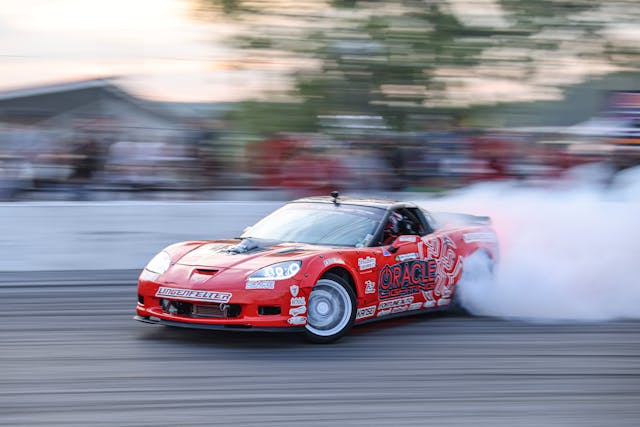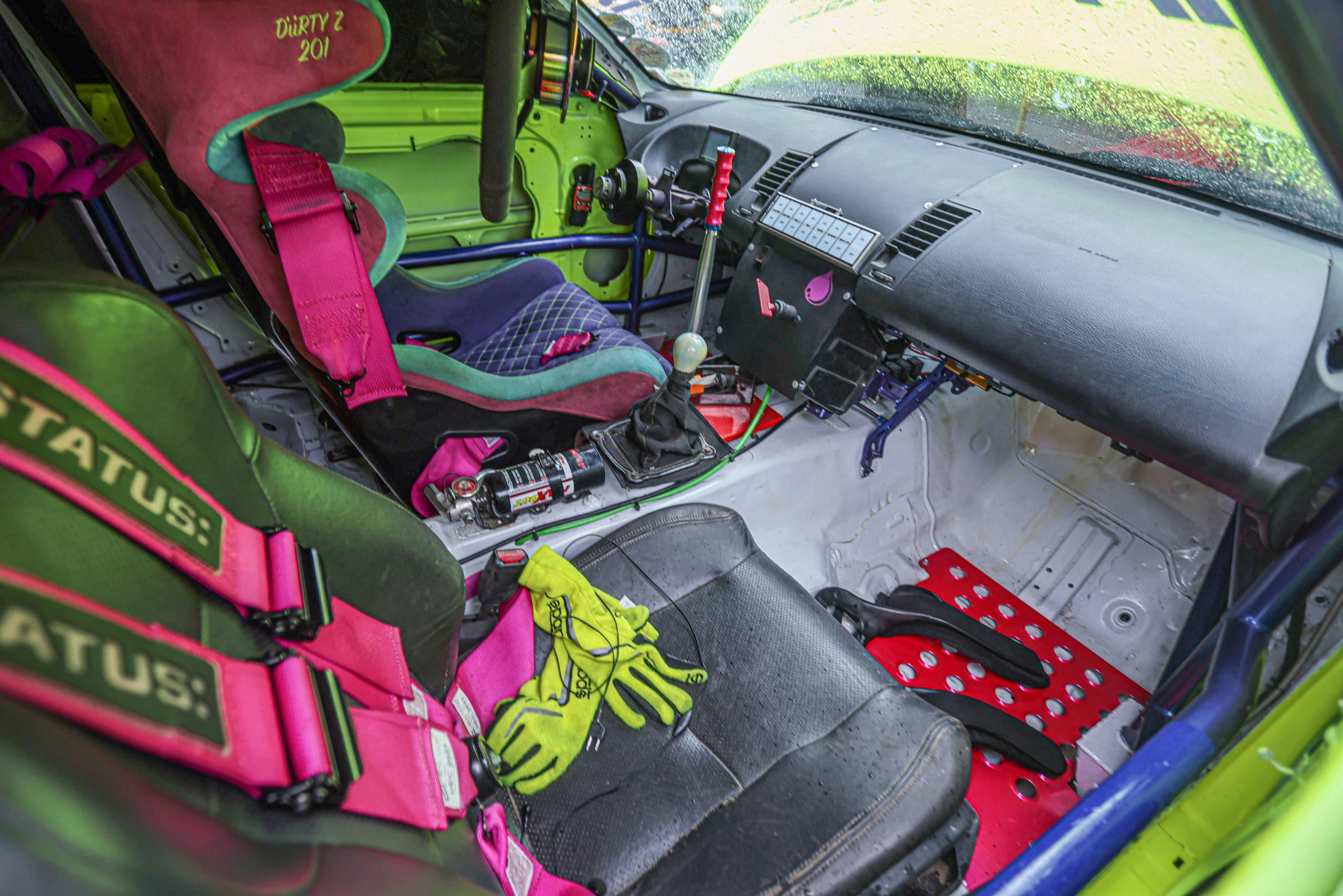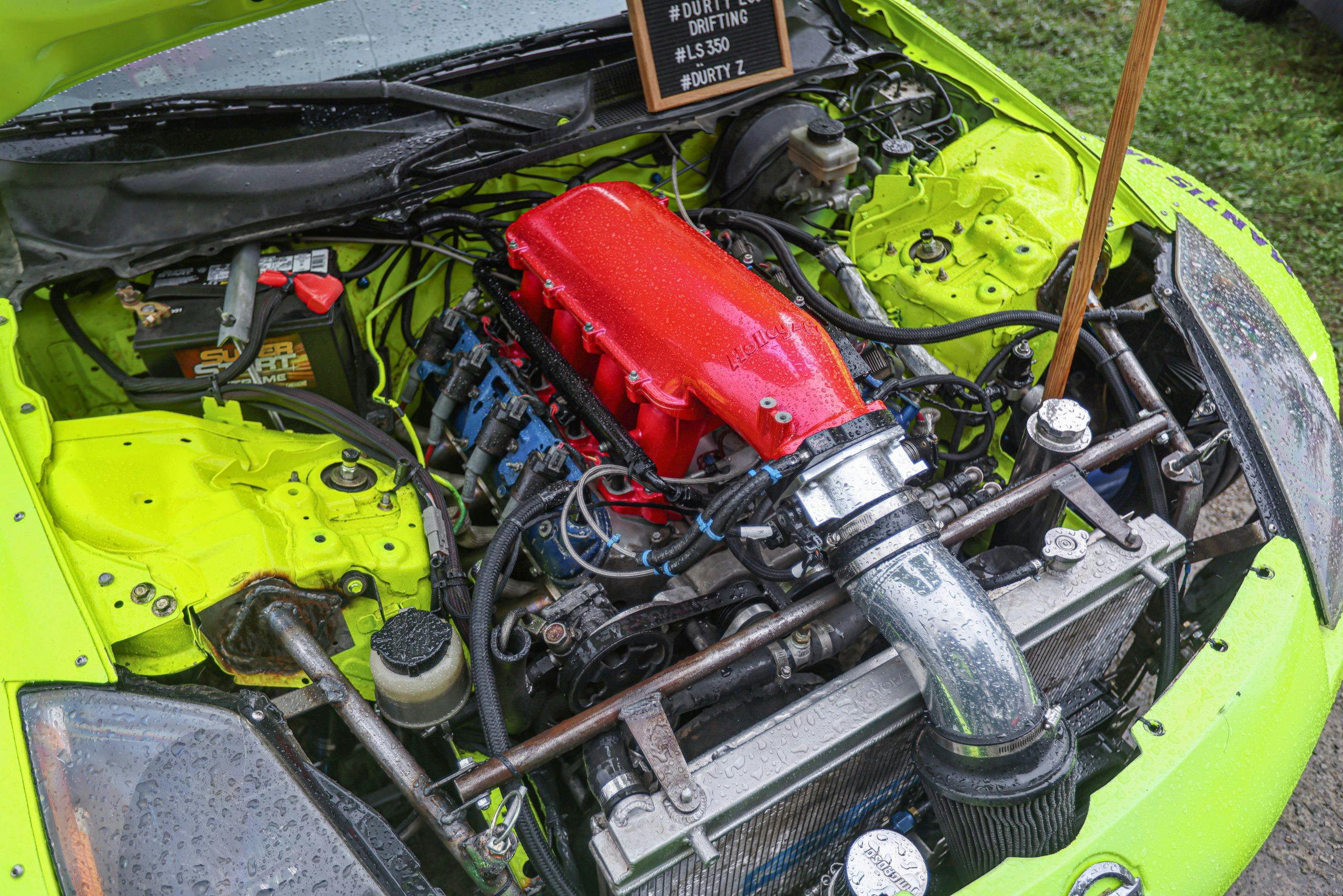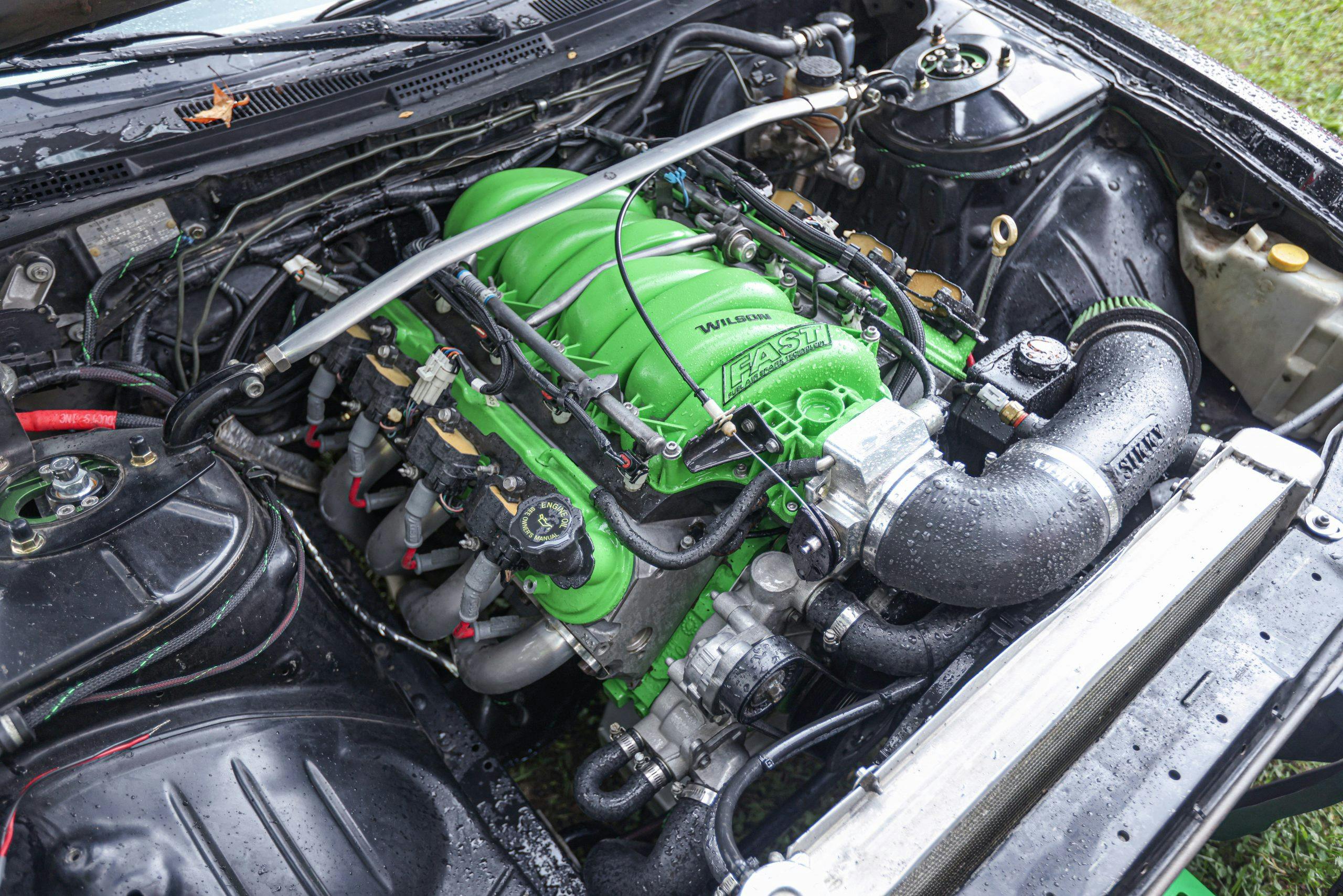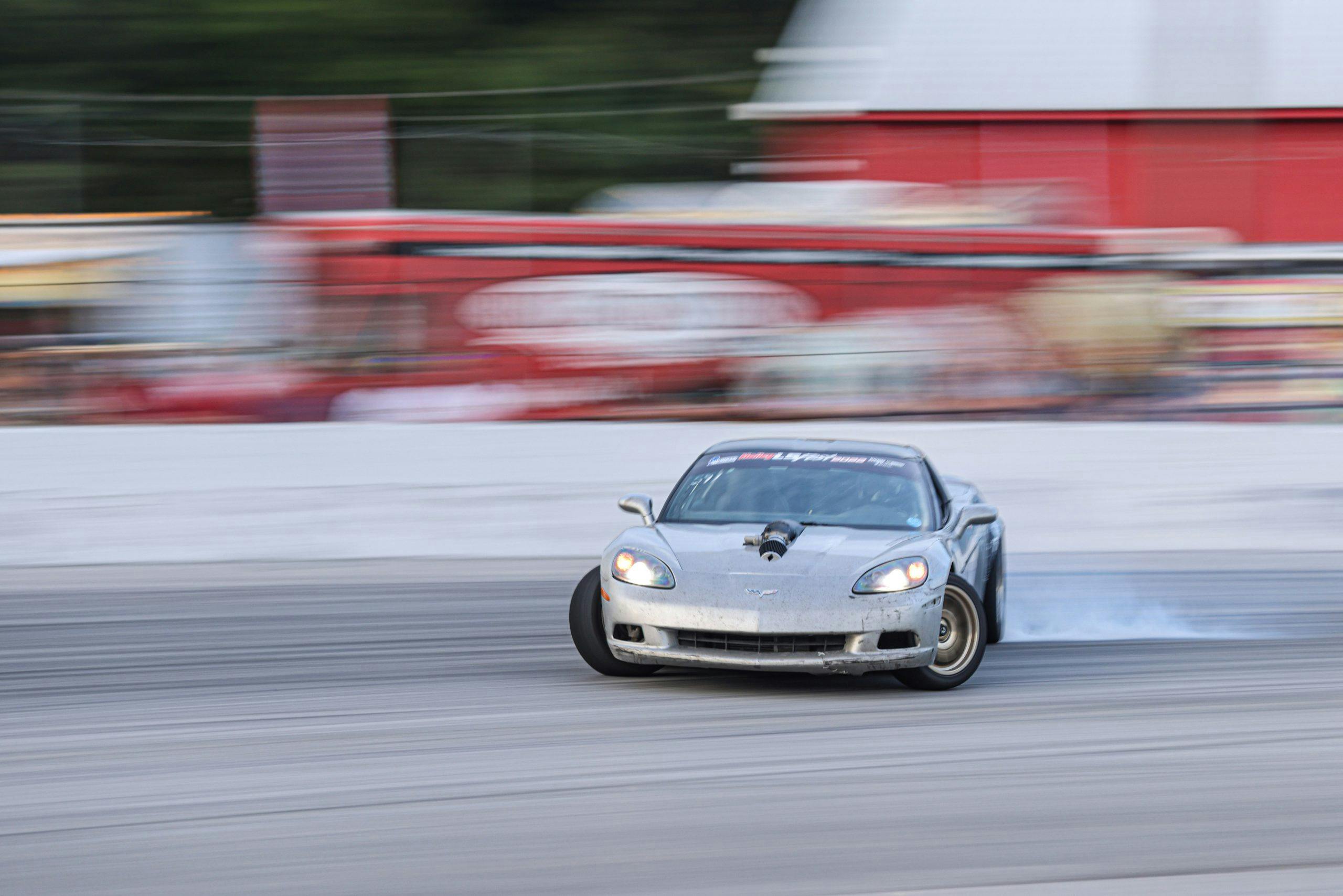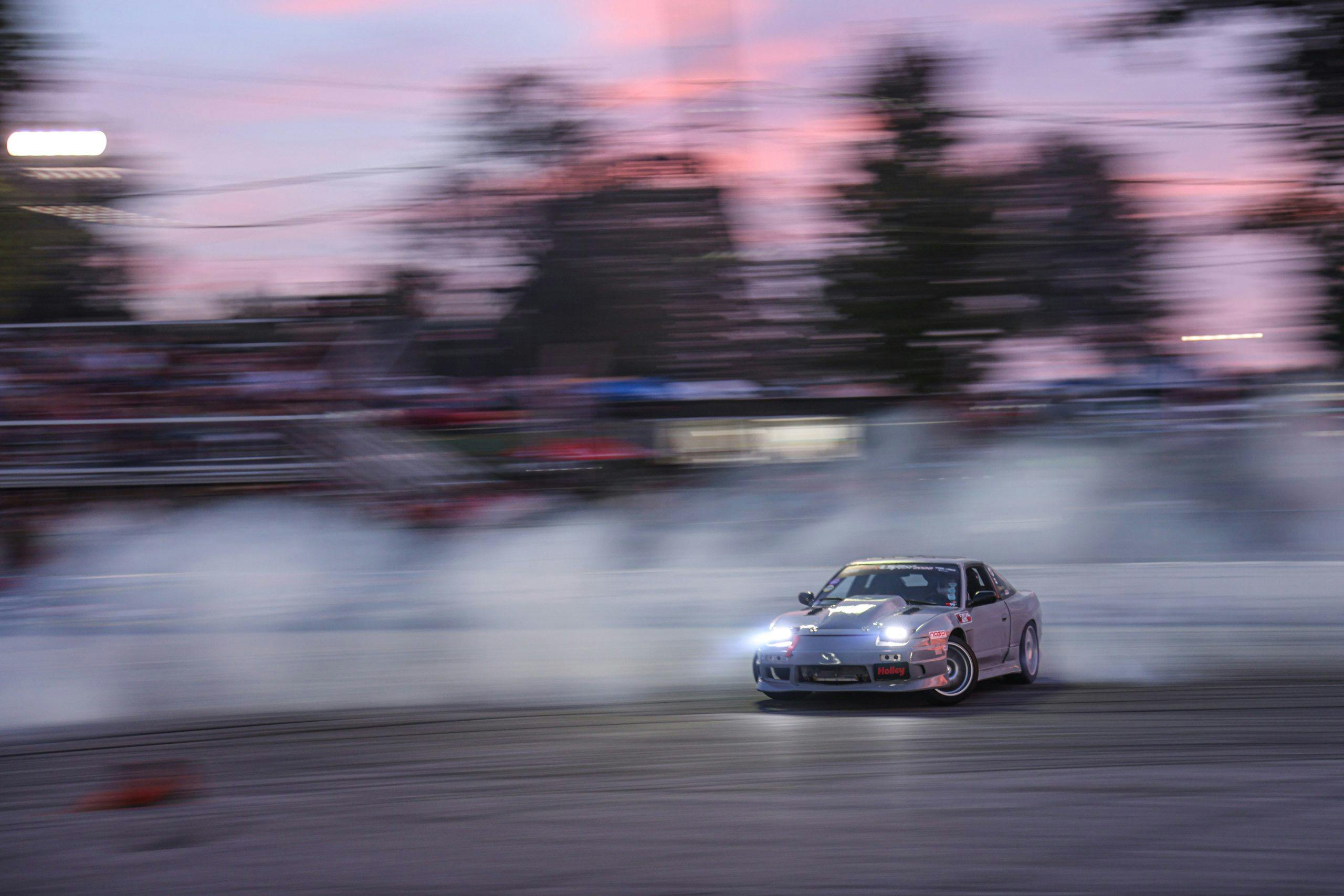Media | Articles
Drifters explain why they love Chevrolet’s do-it-all engine, the LS
Holley’s annual LS Fest organizes its activities around several metrics of performance. If you want horsepower bragging rights, you can strap your car into the dyno. If you’re after an elusive elapsed time on the dragstrip, you can square up against some of the best small-tire drag racers in the country. You can also put your autocross or off-road racing chops to the test.
Want to throw your V-8 powered ride into a turn, sideways, just inches away from a fellow driver, while throwing up a plume of tire smoke? You can do that too.
LS Fest is unique because it celebrates a single engine family. You’d think such a narrow focus would be limiting, yet the LS family of small-block V-8s is virtually ubiquitous in motorsports. You can find these mills racing in the desert, at drag strips all over the world, and on the Bonneville Salt Flats. Though the cars may come in exotic flavors of Nissan, BMW, and Toyota, most amateur and professional drifters rely on Chevy power, and not just those at LS Fest. To see why this engine is the sport’s go-to powerplant, we asked three racers to tell their LS-swap stories.
The bright blue Mustang belongs to Shane Whalley of Flint, Michigan. It’s not unusual to see a Fox-body Mustang with a transplanted LS, but it’s far less common for someone to take out a perfectly good, 5.0-liter Coyote engine and replace it with a pushrod LS. Whalley has an excellent reason, though. This car’s original powertrain was destined for great things—just not in this car.
“We were using it, basically, a parts car for a restomod build of a ’69 Mustang,” he explains. The motor, transmission, and electronics went into the old Mustang, leaving Whalley with a shell. He built the S550-gen car back into a drift machine, designing his own coilover conversion and front suspension along the way. The decision to LS-swap was an easy one; before he got this Mustang, he campaigned a GTO. He became acquainted with the proper way to service the Chevrolet engine, how to take it apart and put it back together, and how to avoid some of its common issues.
Marketplace
Buy and sell classics with confidence
“On top of that, packaging makes everything a lot easier to work on,” Whalley says. “When you’re doing stuff like this, serviceability is pretty important. You don’t want to be spending an hour and a half trying to do something on one engine that you can do in 10 minutes on another.” In case you couldn’t tell, the LS is that 10-minute engine.
When asked about weak spots of this architecture, Whalley listed his modifications to the valvetrain and oil delivery systems: Johnson lifters, Trend Performance pushrods, and a Melling oil pump. He used to use an Accusump accumulator on his GTO, which used a front sump, but after fitting a baffled, Canton Racing oil pan on the Mustang, he hasn’t had any oil-supply issues. The engine also got a new reciprocating assembly with Diamond pistons and K1 rods to stand up to the abuse to which he regularly subjects it. The LS, with the help of a single Garrett turbocharger, puts 830 hp to the tires, more than enough to shred tires and drift at shockingly high speed.
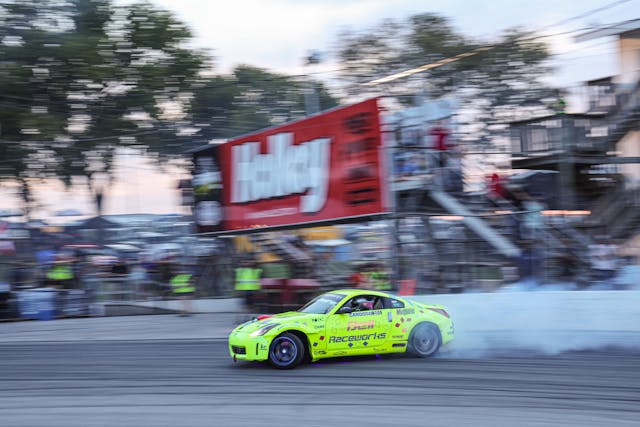
Kabott Cardoso towed his Nissan drift car up from south Georgia to make it to his second LS Fest East. His LS-swap story began three years ago, when he blew up the engine in his E30-generation (1986–91) BMW 3 Series. He bought this 350Z so he could get some seat time while the Bimmer was on the mend. Within three months, the Japanese coupe had evolved into a pro drift car, one powered by eight cylinders instead of six.
When asked why he made the switch from Nissan VQ to Chevrolet LS, Cardoso gave us a familiar answer: reliability and simplicity. He used LOJ Conversions to source the parts needed for the conversion. The company makes LS-swap kits for Nissan 240s made between 1988 and 2002 (S13, S14, and S15 generations) as well as the 300ZX, the 350Z, the 370Z, and even Infiniti’s FX SUV. Cardoso says the LOJ kit uses the stock alternator and power steering system, so there’s no messing with converting hoses and wondering whether you’ve got the proper power-steering pressure.
Dereck Carter from Liberty, Tennessee, attended LS Fest East in 2016 and credits the event for inspiring his drifting career. Soon after, he began to shop for drift project. He found this Nissan 240Z, then a drift project. The rollcage needed work and, of course, the car had no engine.
For Carter, who’s been messing with LS engines for years, the choice was simple. “Parts are everywhere, they’re reliable, they’re easy to work on.” He picked an iron-block, 6.0-liter engine from a 2500 HD Chevrolet pickup and topped it with cylinder heads from the 5.7-liter V-8 (LS6) found in the fifth-gen Z06 and early CTS-V. (These heads are commonly known by the last three digits of their casting number: 243). The valvetrain is from LSXceleration, including the Xcelerator II camshaft with 228/234 degrees of duration on the intake and exhaust, respectively.
“We’ve been running that engine for four years now. It’s about time for more power. As you can see, some of those cars are pretty wild,” he says.
In addition to the LS swap, Carter also modified the suspension himself. Carter describes his angle kit, which allows for a huge increase in steering angle, as “kind of homebrewed throughout the years.” The constant upgrades became necessary as his driving skills improved. He needs more and more grip to keep up with the competition, which grows more intense each LS Fest. “It’s our Daytona 500!” he beams.
Check out the Hagerty Media homepage so you don’t miss a single story, or better yet, bookmark us.

